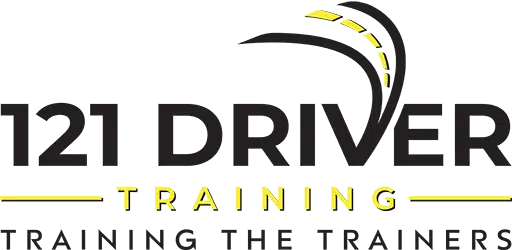As driving instructors, we have the responsibility to not only teach our learners the skills needed to drive safely but also to nurture responsible driving habits that consider the environmental impact of their actions. One such habit is eco-driving – the practice of adopting fuel-efficient driving techniques that can reduce fuel consumption, leading to cost savings for drivers and a reduction in greenhouse gas emissions. With 121 Driver Training delivering the Driving Instructor Course, a TfNSW and ASQA-approved Registered Training Organisation, driving instructors have access to the necessary expertise and resources to provide comprehensive instruction that includes eco-driving techniques for the benefit of learner drivers and the environment.
In this blog post, we will explore the various eco-driving principles and provide driving instructors with practical strategies to teach and reinforce these techniques throughout their driving lessons. By incorporating eco-driving principles into driving lessons, instructors contribute to fostering a generation of environmentally conscious and responsible road users who not only prioritise road safety but also strive to reduce their ecological footprint.
As learner drivers acquire fuel-efficient driving habits, they stand to benefit from lower fuel consumption and costs, improved vehicle maintenance, and a reduced environmental impact, making eco-driving an essential skill for the next generation of responsible drivers. With proper guidance from driving instructors, learner drivers can embrace eco-driving techniques and carry these principles forward as they continue their driving journey.
Smooth Acceleration and Braking Techniques
One of the fundamental principles of eco-driving is managing acceleration and braking smoothly to optimise fuel efficiency. Instructors can teach these methods by focusing on the following key points:
– Gentle acceleration: Encourage learners to gently depress the accelerator when starting from a standstill, gradually increasing their speed to maximise fuel efficiency.
– Anticipating traffic flow: Teach learners to observe and react to the flow of traffic, preventing unnecessary stops and starts that can consume additional fuel.
– Timely braking: Instruct learners to brake smoothly and gradually, avoiding abrupt stops that can waste energy and cause increased wear on brake components.
Encouraging Effective Gear Shifting Practices
The efficient use of gears plays a significant role in maintaining optimal fuel consumption levels. Instructors should emphasise proper shifting techniques for both manual and automatic vehicles:
– Shifting at appropriate RPMs: Instruct learners on when to shift gears in manual vehicles, with a focus on shifting at the ideal RPM range to maximise efficient fuel use.
– Limiting engine revving: Teach learners to avoid over-revving the engine, as this can waste fuel and place unnecessary strain on the engine.
– Utilising ‘Drive’ mode in automatic vehicles: Encourage learners to make use of the automatic transmission’s ‘Drive’ mode, which is designed to manage gear shifts for optimal fuel efficiency.
Harnessing the Power of Cruise Control
The use of cruise control can contribute significantly to more fuel-efficient driving practices. Instructors should provide guidance on the most effective ways to utilise this feature:
– Identifying appropriate situations: Explain to learners the benefits of using cruise control during highway driving or long stretches of steady-speed travel, where maintaining a consistent speed can improve fuel efficiency.
– The safe use of cruise control: Ensure learners understand the circumstances where cruise control should be avoided, such as in heavy traffic or adverse weather conditions, for their own safety and that of other road users.
– Understanding cruise control limitations: Educate learners on the possible limitations of cruise control, particularly when navigating steep inclines or declines where manual adjustments to speed and gears may be required for better fuel efficiency.
Demonstrating Efficient Route Planning and Trip Preparation
With efficient route planning and trip preparation, instructors can help learners further improve their fuel efficiency:
– Selecting the most fuel-efficient route: Teach learners to identify and select the most fuel-efficient routes, accounting for factors such as shorter distances, less traffic congestion, and fewer stops.
– Combining trips: Encourage learners to understand the benefits of combining multiple trips into a single outing to reduce overall fuel consumption and minimise their carbon footprint.
– Vehicle preparation: Explain the importance of maintaining optimal tyre pressure and removing unnecessary weight from the vehicle, which can have a direct impact on fuel efficiency.
Conclusion
By incorporating eco-driving techniques into their lessons, driving instructors contribute to fostering a generation of environmentally conscious and responsible road users. These driving habits not only reduce fuel consumption and associated costs but also minimise vehicles’ environmental impact, leading to cleaner and more sustainable roads.
121 Driver Training, a TfNSW and ASQA-approved Registered Training Organisation, offers comprehensive Driving Instructor Courses that equip instructors with the necessary expertise and resources to prepare learner drivers for success in adopting eco-driving principles. By developing learners’ understanding of fuel-efficient driving techniques, driving instructors create a solid foundation for environmentally responsible driving habits that will endure throughout their students’ lives on the road.
Expand your teaching repertoire with 121 Driver Training’s range of driver instructor courses and instil environmentally responsible driving habits in your learners by incorporating eco-driving techniques into your lessons. Empower the next generation of drivers to prioritise fuel efficiency and reduce their environmental impact, contributing to a greener, more sustainable road environment for all.




